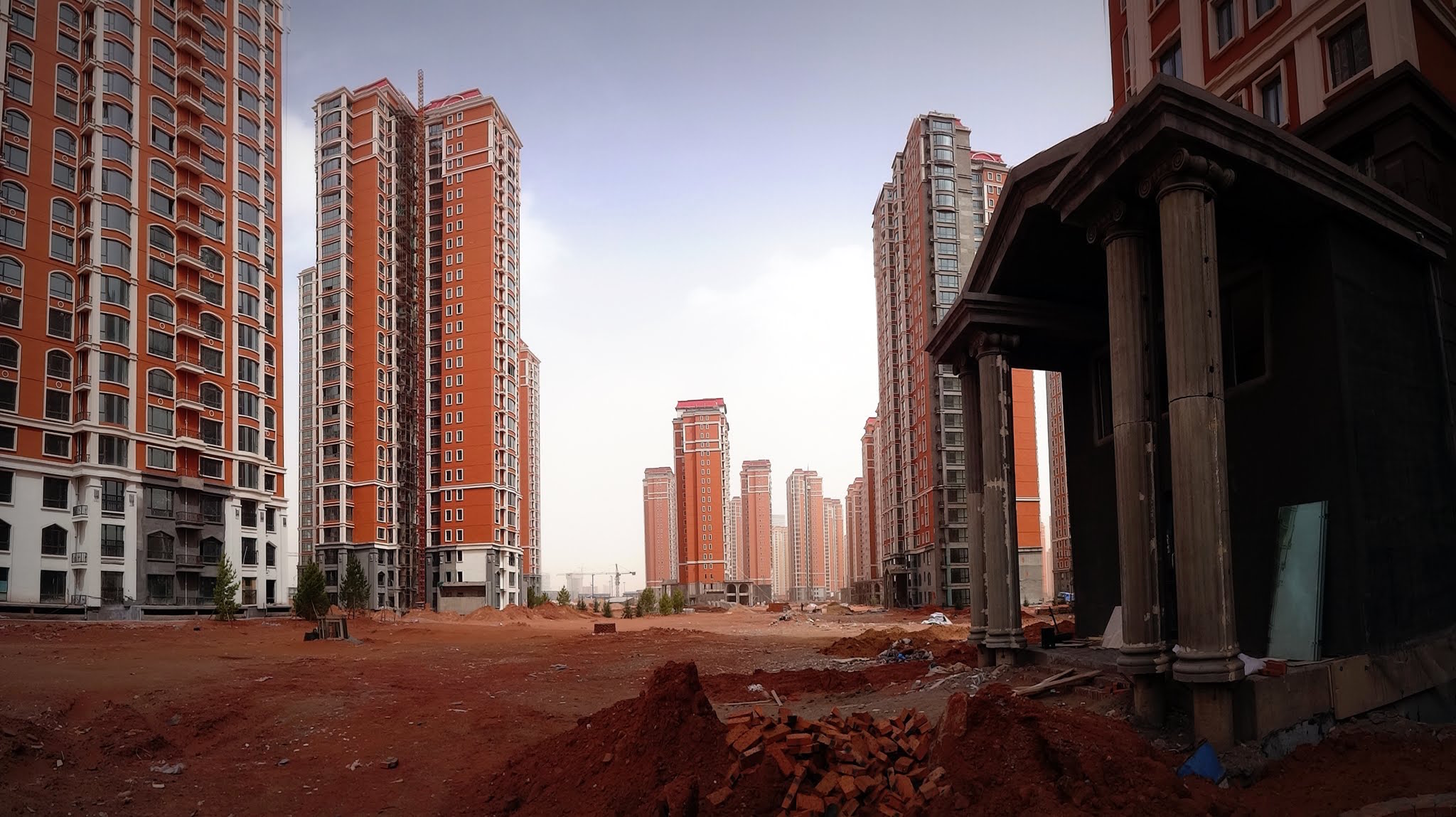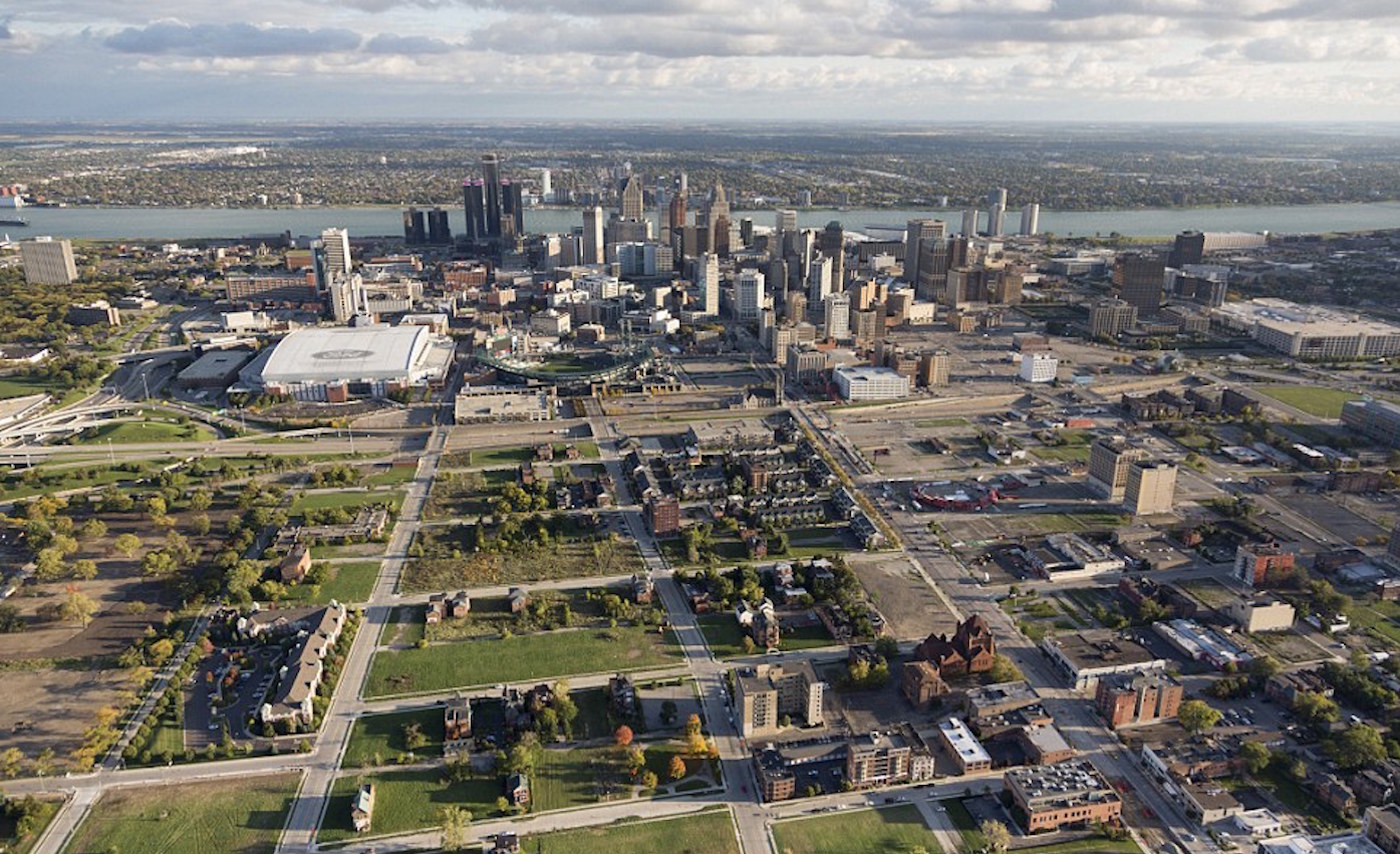Ghost Cities and Ruin Lust
In this essay, Christoph Lindner explores various kinds of spectral living in an era of postindustrial ruin – from London’s abandoned mansions to Mumbai’s ghost skyscrapers.
We live in the era of acceleration – in a world of constant, exhausting hypermobility and relentless, hysterical urbanisation. In what follows, I want to reflect on the phenomenon of accelerated urbanism by looking at its antithesis. My interest is in understanding how our fascination with ruins is reproduced in our cities, spurred by the decline of the industrial era alongside the rise of neoliberal globalisation and the spread of urban poverty.
A global imagination
Ruins have re-emerged as a source of cultural fascination. In the Gothic, Romantic, and Modernist movements in art and culture, ruins frequently featured as sites of interiority, memory, and haunting. Since the 1980s, however, this fascination with ruins has been renewed by the growing fetishisation of postindustrial decay. As the standard explanation goes, the rise of post-Fordist capitalism in the late twentieth century created a set of economic and social conditions that led to the rapid and systematic gutting of many urban-industrial communities.
The post-Fordist transformation of industrial sites of production into dead zones– that is, spaces of inactivity and lifelessness – not only created ruins out of modern industrial architecture, but also generated a desire to see and experience these spaces. This has been done in a variety of ways.
At one extreme, these spaces are deliberately preserved as ruins. An example is St. Peter’s Seminar outside Glasgow, where the cultural value of the site resides precisely in its state of ruination. The community activism around the building is focused on maintaining, rather than reversing, the conditions of material disrepair and spatial otherness.
Figure 1: St. Peter’s Seminary near Cardross, Scotland (Photo by the author)
At the other extreme is the super-gentrification of the ruin where postindustrial sites are ‘rehabilitated’ into sanitised spaces for exclusive living. A particularly conspicuous example of this is the High Line elevated park in New York City. The project not only reclaims a derelict railway by turning it into a highly-manicured space of curated leisure. It also serves as an engine of gentrification, transforming the surrounding neighborhood into a delirious playground for luxury consumption.
Figure 2: View from the High Line, 2015(Courtesy Renzo Piano Building Workshop. Photo by Nic Lehoux)
Spectral living
Both of these ruin dynamics (one involving preservation and the other involving recuperation) respond to an obsession with disorder, captivating the visual imagination in much the same way as global slums. Indeed, the slum has experienced a new wave of interest for these same reasons. What the global slum and the urban ruin both evoke is a certain condition of transience in which rapid urban acceleration yields precarious ways of living. Arjun Appadurai explores this condition of transience in his study of Mumbai, in which he uses the concept of ‘spectral housing’ to describe the improvised and speculative forms of housing that develop in slums as a result of predatory capital. A more recent example of urban transience is the case of Airbnb, whose corporate slogan, ‘Belong Anywhere’, really means ‘Live Nowhere’.
Or, to go in another direction, consider China’s much-discussed ghost cities: vast, instant, pop-up cities, crammed with tall buildings. These urban agglomerations possess the superficial appearance of being inhabited, but are largely devoid of occupants and life. Appadurai’s example of Mumbai shows what happens when too many people compete over insufficient housing. China’s ghost cities involve the reverse: an oversupply of housing suffering from a lack of people.
Figure 3: Ghost city: empty streets and vacant homes in Ordos, China, 2014. (Photo by Colorful Rebel)
Alongside the slum and the ruin, there is also the phenomenon of ‘ghost mansions’ – the uninhabited mega-homes of the super-rich, which are similarly characterised by this condition of transience. A notable example is Antilia, Mumbai’s so-called ghost skyscraper, widely reported to be the world’s most expensive private residence at the time of construction.
Figure 4: Ghost skyscraper: Antilia, Mumbai (Photo via India Times)
Completed in 2009, Antilia belongs to Mukesh Ambani (owner of an energy and telecom conglomerate) and cost an estimated $1 billion to build. Its distinctive features include: 27 floors, a staff of 600, parking spaces for 168 cars, 3 helipads, a total living space of 48,000 square feet, and – for nearly three years after its completion – precisely zero residents. Like China’s ghost cities, Mumbai’s ghost skyscraper is haunted by the absence of inhabitation, except that here the reason has nothing to do with a bursting property bubble and everything to do with extreme excess made possible by mega-wealth.
"The prominence of such spaces in contemporary visual culture diverts attention from the ethical demands that ruins, slums, and ghost mansions place on us."
In London, there is another version of the ghost mansion that combines excess with abandonment. Like Mumbai’s ghost skyscraper, London’s ghost mansions are the product of mega-wealth. The difference is that London’s ghost mansions function as empty repositories for the global rich. These are risk-averse investments made in times of financial volatility and crisis – a way of safely parking money in property. The result is that, despite their prime locations and opulent architecture, these multi-million-pound homes are frequently left uninhabited and neglected. As a consequence, many of the buildings decay – particularly on the inside – and slowly transform into ruins.
During a time of acute housing shortage and growing inequality, there is a certain perversity to a situation where enormous luxury homes are not only left unoccupied, but also left to decay to the point of becoming unfit for human living. This points to an uncomfortable relationship between our visual fascination with ruins and the social problems that ruins contain or express.
Figure 5: Ghost mansion in London (left) and abandoned hotel in Detroit (right). (Photos by The Guardian and Marchand & Meffre).
For instance, consider the aesthetic similarities between the two images of ruin in Figure 5. One is an expensive residence in central London and the other is an abandoned hotel in Detroit. One space is worth millions; the other space is worth very little. Yet, they share the same condition of abandonment and decay. These parallels say something powerful about the social effects of the economic system producing both spaces. When the evacuation and injection of capital both lead to the same condition of decay, it suggests that something is not working. Or perhaps it is more accurate to say that something is working too well, in the sense that these images illustrate the degree to which short-term profit can be radically prioritised over human and social well-being.
The postindustrial condition
What links all these different iterations of the ruin is that they are constituted within spaces where divisive and dehumanising practices are reproduced. The prominence of such spaces in contemporary visual culture diverts attention from the ethical demands that ruins, slums, and ghost mansions place on us. This happens precisely because the appearance of the spaces takes precedence over their social and material histories. As a result, it becomes increasingly easy to neglect the need to alleviate their conditions of inequality and disrepair.
Dora Apel comments on precisely this issue in her 2015 book on Detroit, Beautiful Terrible Ruins, where she sees a tension between pleasure and fear animating contemporary imaginations of the ruin. For Apel, the global fascination with urban-industrial ruins is inseparable from this tension, for which the postapocalyptic landscape of Detroit has become emblematic. In her reading of the city, the ruin becomes an expression of the anxiety of decline.
"The redevelopment of Detroit is partly emerging from decelerated creative practices through which residents resist the accelerated, atomising conditions inherent in contemporary urban living."
There is a lot to say about the complicated, contradictory functioning of ruin imagery as a source of both fear and comfort, and the role that art plays in popularising that imagery as well as circulating it. But I also think there are questions to ask about the dominant reading of Detroit as a ruined city. I do not want to downplay the very real and urgent problems of poverty, inequality, and injustice that have plagued Detroit. Nor do I want to gloss over the role of capitalism in heightening those problems. Yet it is worth pointing out that many of the labels being used to describe Detroit say as much about the categories we use to value cities as they do about the lived experience of those cities.
Figure 6: Shrinking city: aerial view of Detroit revealing vacant residential lots on the edge of downtown. (Photo by New York Times)
Detroit, for instance, is frequently described as a ‘shrinking city’ – a former manufacturing center that, like many industrial cities in the American Midwest, has seen its population and economy rapidly contract over the last few decades. But why does the size of the economy or population form the basis for measuring a city’s growth? In other words, to call Detroit a shrinking city is to continue to value it according to the very system that contributed to its ruin.
In recent years, much of the critical commentary on Detroit has shifted from cataloguing or exposing ruins to exploring what has grown in the vacant spaces left open by ruins. The picture of Detroit emerging now is one of ‘creative urbanism’, where the phenomenon of urban shrinkage has created new forms of living and working.
Figure 7: Urban farming in Detroit. (Photo via 8thnbee.com)
This can be seen in Detroit’s recent embrace of urban farming. As a result, Detroit’s old slogan of ‘Made in Detroit’ has been replaced by the new slogan of ‘Grown in Detroit’, which not only celebrates the new prominence of urban agriculture in the city but also critiques the ‘shrinking city’ label it has been given. This is another dimension of our relationship with ruins. The redevelopment of Detroit is partly emerging from decelerated creative practices (in this case, slow food and urban farming) through which residents resist the accelerated, atomising conditions inherent in contemporary urban living.
My broader point is that cities like Detroit, Mumbai, and London all belong to a global imaginary of ruins whose processes both resist and reinforce one another. The seductive appeal of that imaginary resides in the way ruins enable an illusion of escape from contemporary cultures of speed.
Christoph Lindner is Professor and Dean of the College of Design at the University of Oregon, where he leads the Slow Lab research initiative and writes on globalisation, cities, and visual culture. For more information, visit www.christophlindner.org







